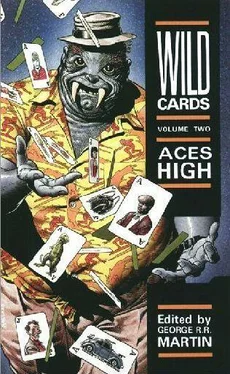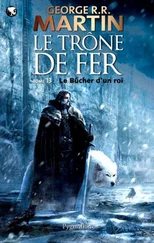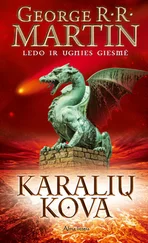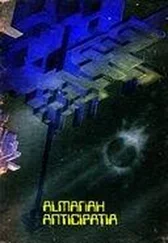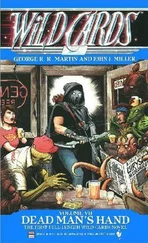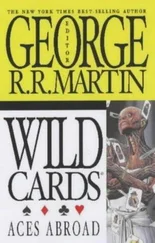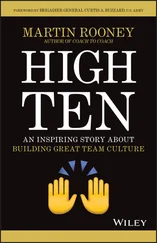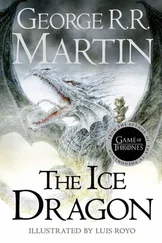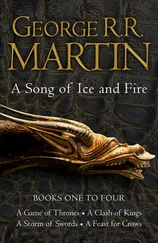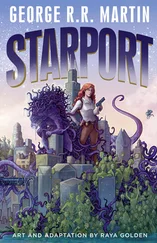George Martin - Aces High
Здесь есть возможность читать онлайн «George Martin - Aces High» весь текст электронной книги совершенно бесплатно (целиком полную версию без сокращений). В некоторых случаях можно слушать аудио, скачать через торрент в формате fb2 и присутствует краткое содержание. Жанр: Фантастика и фэнтези, на английском языке. Описание произведения, (предисловие) а так же отзывы посетителей доступны на портале библиотеки ЛибКат.
- Название:Aces High
- Автор:
- Жанр:
- Год:неизвестен
- ISBN:нет данных
- Рейтинг книги:5 / 5. Голосов: 1
-
Избранное:Добавить в избранное
- Отзывы:
-
Ваша оценка:
- 100
- 1
- 2
- 3
- 4
- 5
Aces High: краткое содержание, описание и аннотация
Предлагаем к чтению аннотацию, описание, краткое содержание или предисловие (зависит от того, что написал сам автор книги «Aces High»). Если вы не нашли необходимую информацию о книге — напишите в комментариях, мы постараемся отыскать её.
Aces High — читать онлайн бесплатно полную книгу (весь текст) целиком
Ниже представлен текст книги, разбитый по страницам. Система сохранения места последней прочитанной страницы, позволяет с удобством читать онлайн бесплатно книгу «Aces High», без необходимости каждый раз заново искать на чём Вы остановились. Поставьте закладку, и сможете в любой момент перейти на страницу, на которой закончили чтение.
Интервал:
Закладка:
March of 1983 opened cold and drizzly: Mr. Koyama shivered under his hat and overcoat as he scanned the sky night after night. A bout of influenza kept him off the roof till the twenty-second, and he was annoyed to discover that Seki and Ikeya had together discovered a new comet while he was laid up. Increased dedication and vigilance, he vowed again.
The morning of the twenty-third, Mr. Koyama finally found his comet. There, near the not-yet-risen sun, he saw a fuzzy ball of light. He sneezed, gripped the Fujinans tightly, and gazed up again to confirm the sighting. Nothing else should be in that part of the sky.
His heart pounding, Mr. Koyama descended to his study and picked up the telephone. He called the telegraph office and sent a wire to the International Astronomical Union. (Telegrams are de rigueur with the IAU; a telephone call would be considered vulgar.) Offering vague prayers to a host of gods in which he did not profess actual belief, Mr. Koyama returned to the roof with the strange feeling that his comet would have disappeared while he wasn't looking. He breathed a sigh of relief.
The comet was still there.
The confirmation from the IAU came two days later, and confirmed as well what Mr. Koyama already knew from his own observations: Koyama 1983D was a real whizzer. It was flying from the sun like a bat out of hell.
Further reports indicated all sorts of anomalies. A routine spectrographic analysis showed that Koyama 1983D was a decidedly odd duck indeed: instead of the normal hydroxyls and carbon, Mr. Koyama's comet registered large amounts of oxygen, nitrogen, hydrogen, carbon, silicon, and various mineral salts. In short, all that was necessary for organic life.
A storm of controversy immediately arose over Koyama's comet. How anomalous was it, and was organic life possible in the cold and dusty ranges of the Oort Cloud? Mr. Koyama was interviewed by teams from the BBC, NBC, and Soviet television. He was profiled in Time magazine. He offered modest statements about his amateur status and his astonishment as to all the fuss; but he was inwardly more pleased than he had been over anything, even the birth of his eldest son. His wife observed him walking about the house with the strut of a twenty-year-old and the broad grin of a clown.
Every night and morning, Mr. Koyama was on the roof. It was going to be hard to top this, but he was going to try.
Part Two: October 1985
Astronomy was getting more attention these days, what with the reappearance of P/Halley 19821, but Mr. Koyama maintained his equilibrium in the face of the turmoil. He was an old hand now. He had discovered four additional comets since Koyama 1983D, and was assured of a prominent place in cometary history. Each of his cornets had been the so-called 'Koyama-type' comets with their weird spectrography and their bat-out-of-hell speed. Koyama-type comets were being discovered by all manner of amateurs, always hugging the sun.
The controversy had not died down; had in fact intensified. Was it possible that the solar system was passing through a storm of comets containing organic elements, or was this a fairly ordinary occurrence that somehow hadn't been noticed till now? Fred Hoyle smiled and issued an I-told-youso statement reiterating his theory of cosmic seedlings containing organic life; and even his bitterest opponents conceded that the annoying old Yorkshireman might have won this round.
Mr. Koyama received many invitations to speak; he declined them all. Time speaking meant time away from his rooftop observatory. Currently the record number of comet discoveries was nine, held by an Australian minister. Mr. Koyama was going to win the honor for Japan or die trying.
Part Three: Late June 1986
There: another comet, barely visible, chasing the sun about the sky. That made six altogether. Mr. Koyama descended to his study and called the telegraph office. His heartbeat increased. He needed confirmation on this one desperatelynot confirmation of the sighting, but of the spectrography.
Mr. Koyama was climbing the charts of comet-sighters, and this was in a period of a nervous, -increased watching of the sky: people were looking up a lot these days, hoping to find the dark nonreflective Swarm parent that was presumably lurking nearby. But the prospect of number six wasn't what excited Mr. Koyama-he was getting fairly blase about finding new comets these days. What he needed was confirmation of his new theory.
Mr. Koyama accepted the congratulations of the telegrapher and put down the telephone. He gazed with a frown at the chart he had on his desktop. It suggested something that he suspected he was the only one to notice. It was the kind of thing that was only noticed by people who spent their nights on rooftops, counting the hours and days, shrugging off the dew, and staring at bits of the night through long refractive lenses.
The Koyama-style comets seemed to possess not only weird organics and uncommon velocity, but an even stranger periodicity. Every three months, more or less, a new Koyama type comet appeared near the sun. It was as if the Oort Cloud were shrugging off a ball of organic compounds to mark each new Terran season.
Smiling, Mr. Koyama savored the idea of the sensation his observation would cause, the panic among cosmographers trying to work out new formulas for explaining it. His place in astronomy would be assured. Koyama comets were proving as regular as planets. In a way, he thought, it was lucky the Swarm had landed, because otherwise the observation might have been made earlier..
The thought echoed slowly in his mind. Mr. Koyama's smile turned to a frown. He looked at his chart and performed some mathematics in his head. His frown deepened. He took out a pocket calculator and confirmed his calculations. His heart lurched. He sat down- quickly.
The Swarm: a tough kilometers-long shell protecting vast quantities of biomass. Something like that would be vulnerable to changes in temperature. If it got near the sun it would have to bleed off excess heat somehow. The result would be a fluorescence not unlike that of a comet.
Suppose the Swarm were in a fast orbit with the sun at one focus and the Earth at the other. With the Earth in motion relative to the sun, the orbit would be complicated, but not impossible. But with all the sightings of Koyama-type comets, it should be possible to pinpoint the approximate location of the Swarm. A few hundred hydrogen-tipped missiles would then end the War of the Worlds in bang-up style.
"Muthafucka," breathed Mr. Koyama, a strong word he had learned from GIs during the occupation. Who the hell should he tell about this? he wondered. The IAU was the wrong forum. The Prime Minister? The Jieitai?
No. They would have no reason to believe an obscure retired businessman who called up raving about the Swarm. No doubt they got enough of those calls as it was.
He would call up his comrades from Mitsubishi. They had enough clout to see that he got heard.
As he reached for the phone and began to dial, Mr: Koyama felt his heart begin to sink. His place in astronomical history was assured, he knew, but not as he wanted. Instead of six comets, all he had discovered was a damned lump of yeast.
HALF PAST DEAD
By John J. Miller I.
Brennan followed the Mercedes full of Immaculate Egrets to the gate of the cemetery in a gray BMW he had stolen from the gang three days before.
He stopped a hundred yards behind them, his headlights off, while one of the Egrets got out of the Mercedes and swung open the graveyard's sagging wrought-iron gate. He waited until they went on into the cemetery, then he slid out of the BMW, took his bow and quiver of arrows from the back seat, slipped his hood over his head, and crossed the street after them.
The six-foot-high brick fence around the graveyard was stained with city grime and crumbling with age. He pulled himself over it easily and dropped down inside without a sound.
Читать дальшеИнтервал:
Закладка:
Похожие книги на «Aces High»
Представляем Вашему вниманию похожие книги на «Aces High» списком для выбора. Мы отобрали схожую по названию и смыслу литературу в надежде предоставить читателям больше вариантов отыскать новые, интересные, ещё непрочитанные произведения.
Обсуждение, отзывы о книге «Aces High» и просто собственные мнения читателей. Оставьте ваши комментарии, напишите, что Вы думаете о произведении, его смысле или главных героях. Укажите что конкретно понравилось, а что нет, и почему Вы так считаете.
